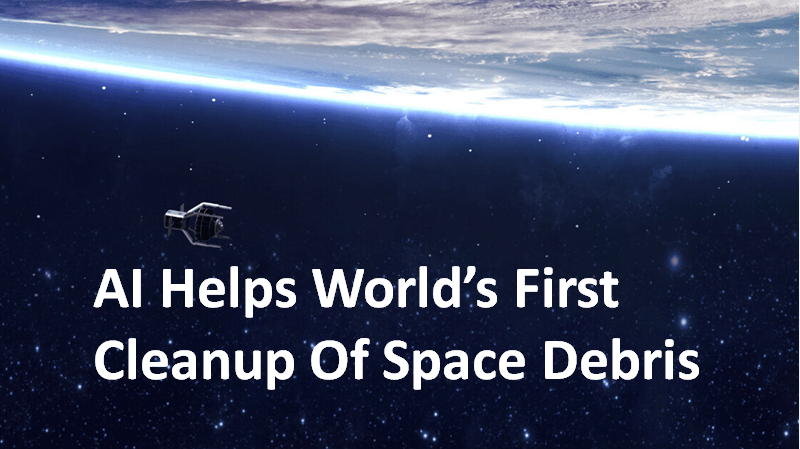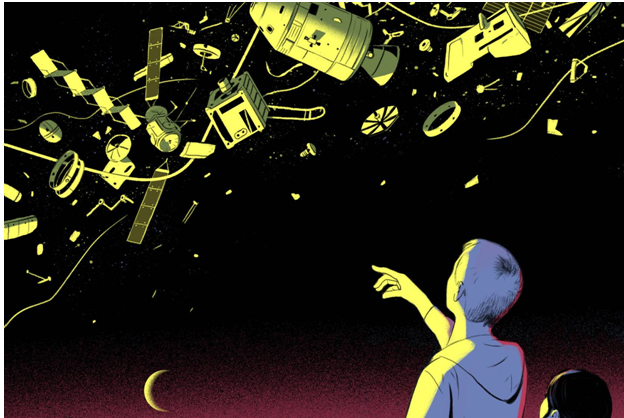
AI Helps World’s First Cleanup Of Space Debris

Space is a messy place. It is estimated that 34,000 pieces of junk over 10 cm in diameter are presently orbiting Earth at around 10 times the speed of a bullet. The damage could be disastrous, if one of them hits a spacecraft.
The International Space Station had to dodge an unknown piece of debris in September. As the volume of space trashgrowing rapidly, there will be increase in chances of collision.
In 2025, The European Space Agency (ESA) is planning to launch the world’s first debris-removing space mission called ClearSpace-1 in order to clear up some of the mess.
The innovation is being created by Swiss startup ClearSpace, a side project from the Ecole Polytechnique Fédérale de Lausanne (EPFL). Their evacuation target is the now-outdated Vespa Upper Part, a 100 kg payload connector circling 660 km over the Earth.
ClearSpace-1 will utilize an AI-fueled camera to discover the debris. Its automated arms will at that point get the object and drag it back to the air prior to consuming it.
“To dependably assess the 6D present (three pivots and three interpretations) of the target from video-groupings it is required to create a deep learning algorithm despite the very fact that pictures taken in space are troublesome,” said Mathieu Salzmann, an EPFL researcher leading the task.
Vespa hasn’t been seen for a very long time, so EPFL will utilize a database of engineered pictures to mimic its present appearance as training material for the algorithms.
When the mission starts, the researchers will catch genuine pictures from past the Earth’s air to fine tune the AI framework. The algorithms likewise should be moved to a devoted hardware platform installed the catch satellite.
“The pos evaluation algorithms can fill the gaps between acknowledgments separated one second apart, diminishing the computational weight, since movement in space is deferential,” said Professor David Atienza, head of ESL.
“In any case, to assure that they will independently adapt to all or any the vulnerabilities in the mission, the algorithms are complex to such an extent that their usage requires crushing out all the performance from the stage assets.”
On the off chance that the catch is effective, it could make ready for additional garbage evacuation missions that can make space a more secure spot.



